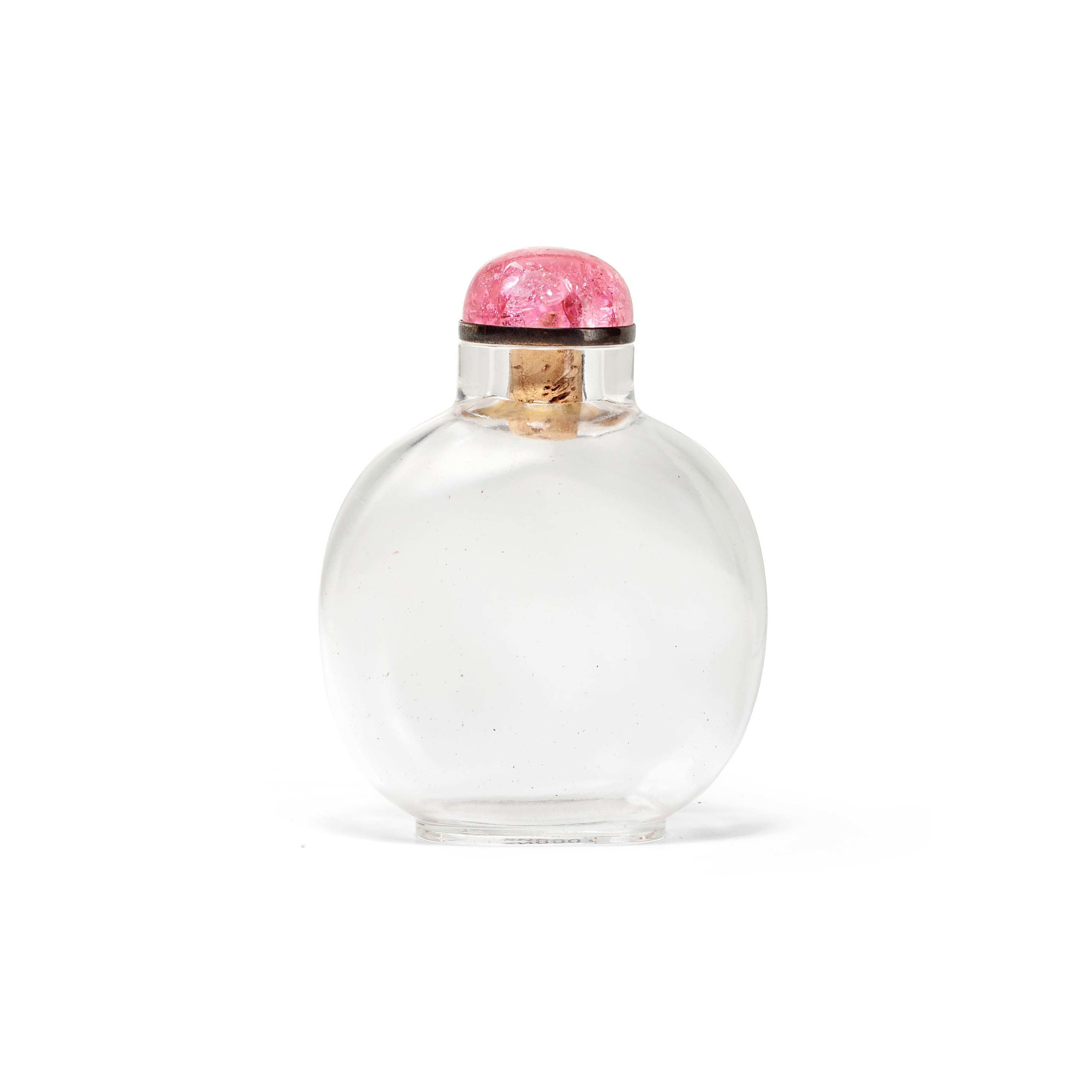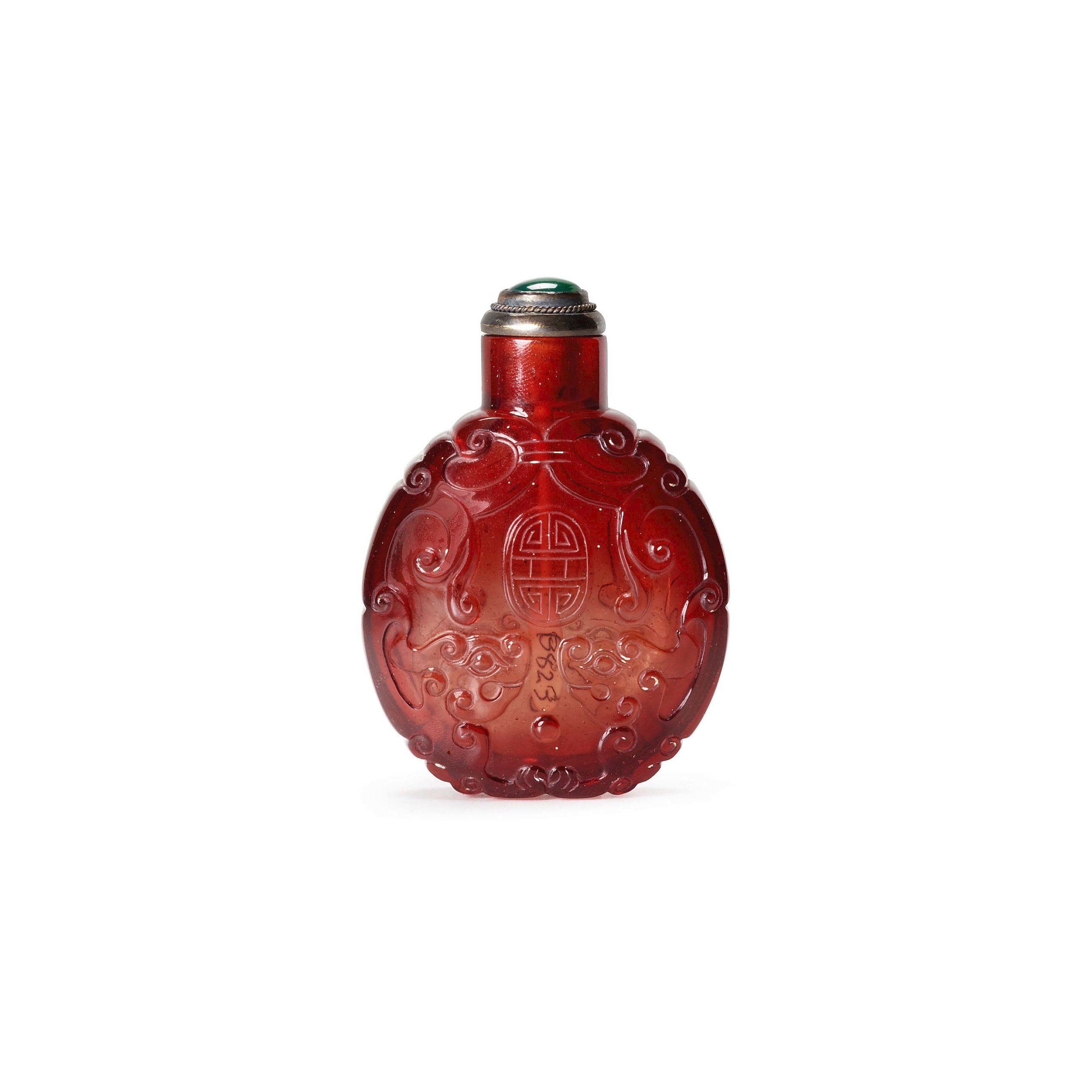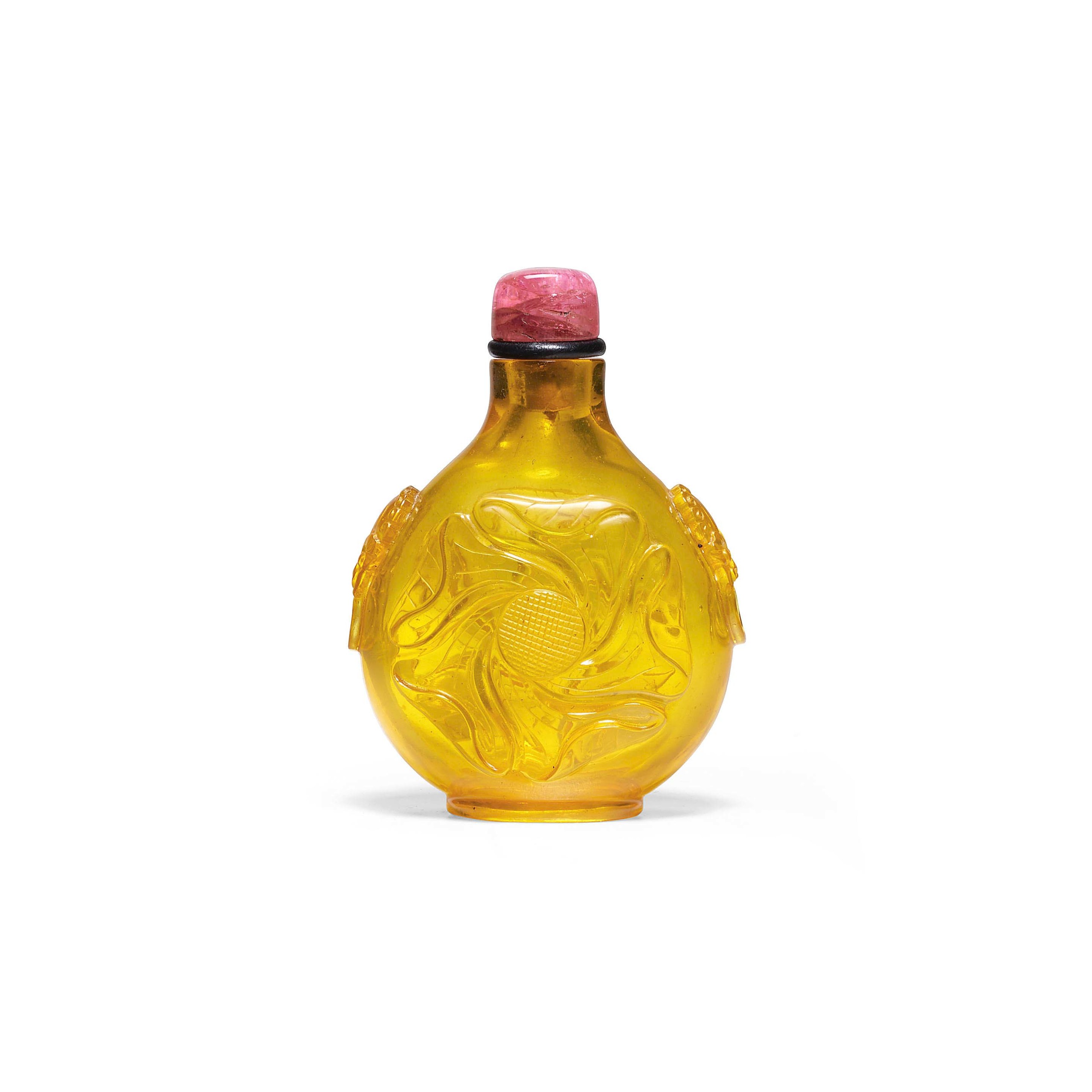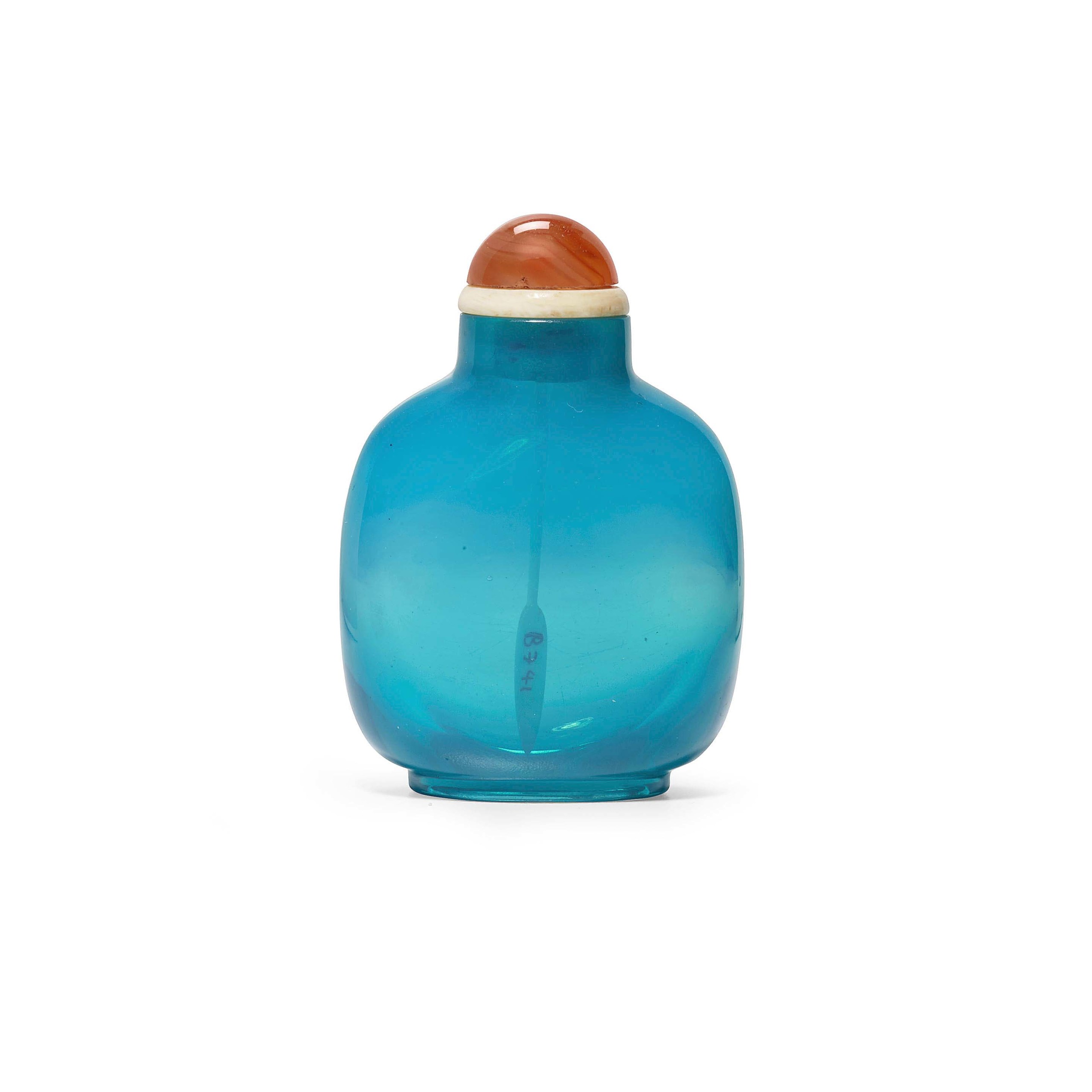
The highest price of the sale, $14,080, was achieved by this “Prince Ding” clear rock crystal snuff bottle from 1851, 2¼ inches ($12/18,000).
Review by Carly Timpson; Photos Courtesy Bonhams
NEW YORK CITY — For the past 15 years, art and culture enthusiasts have descended upon New York City in mid-March to celebrate and support Asia Week New York, a collaboration of auction houses, museums, institutions and Asian art specialists in the New York area. As such, Bonhams spent the week of March 14-22 conducting several online and in-person auctions, including the highly anticipated March 19 sale of Chinese snuff bottles from a private American collection. The 81-lot sale realized $235,546 and saw a 68 percent sell-through rate.
At the top of the sale was a rare dated and hallmarked “Prince Ding” clear rock crystal bottle. Belonging to the fifth Prince Ding Zaichuan, the great-great-grandson of the Qianlong Emperor, this round bottle, dated to 1851, sat upon a flat oval foot rim, which is indicative of the transitional period during which it was carved. Exceptionally hollowed and polished, both inside and out, the bottle sold within estimate to achieve $14,080.

This transparent ruby-red glass chilong and shou-character bottle, circa 1780-1820, 2-3/16 inches, made $12,160 ($6/8,000).
The second highest finish of the auction was that of a transparent ruby-red glass bottle, which exceeded its $6/8,000 estimate to cross the block at $12,160. Each face of the bottle’s flattened oval shape was carved with two chilong dragons, facing inward towards the central traditional shou character, which represents longevity. The exact date of this bottle is unknown, but the catalog reads, “The wide mouth here is typical of early imperial glass snuff bottles, and a date from the Qianlong period (1736-1795) is the most likely one…it is conceivable that a bottle of this kind might have been made to Qianlong standards into the Jiaqing reign (1796-1820).”
Another chilong bottle, this one made of white jade circa 1760-1850, earned $9,600. As the catalog notes, the main faces of the rounded rectangular bottle were “carved in a soft rounded relief with two ascending and descending chilong in a vibrant swirling dance on a plain ground.” Achieving the same price was a white and russet-flecked jade bixie-form bottle, carved circa 1750-1830. The bixie is a chimera beast with the shell of a tortoise, the head of a dragon, the paws of a lion and the tail of a qilin (another mythical creature related to a dragon). The most distinctive inclusion of russet coloring on the jade bottle was seen where the creature’s tail curled up over its shell; otherwise, the bottle was mostly white.

This transparent golden-yellow glass mallow bottle, circa 1730-70, 2-1/8 inches, found a buyer for $8,960 ($6/10,000).
Exhibited twice at the Hong Kong Museum of Art (1977 and 1994) and once at the National Museum of Singapore (1994-95), a flattened pear-shaped transparent golden-yellow glass bottle, circa 1730-70, brought $8,960. Each main face of the bottle is carved with a large five-petaled mallow flower and each of the narrow sides featured a fixed-ring lion-mask handle. Also yellow and achieving $8,960, though very different in form, was a slightly bulbous ovoid-shaped miniature yellow jade bottle with a soft lustrous polish. Measuring just 1-5/8 inches, this circa 1750-1800 bottle was supported by a short flat oval foot ring with a deeply cut flat base.
A few other jade bottles finished among the top lots. Earning $7,680 was a marbled apple green and white jadeite bottle with one carved face. Adorned in delicate relief, the front of the bottle had a scaly horned and whiskered dragon, breathing fire, among swirling clouds. The rounded rectangular bottle’s upper third and reverse were polished smooth. A circa 1750-1820 white jade bottle, in an unusual flattened pear shape, made $7,040, besting its high estimate of $6,000. Both faces of this one were carved with a recessed oval panel that featured depictions of horses. One side showed a standing horse tethered to a post and the other, a horse with its head bent towards its backside. A catalog note read: “Interestingly, the depiction of a horse tethered to a post was an extremely popular one on agate bottles but far more rare on jade bottles.” The sloping shoulders of the bottle were further carved with rams-head fixed-ring handles.

Exceeding its $3,5/5,500 estimate to achieve $8,320 was a transparent turquoise glass bottle, circa 1780-1850, 2¼ inches.
Several interesting glass bottles found buyers as well. Soaring past its $3,5/5,500 estimate was a rare circa 1780-1850 gradually transparent turquoise bottle, which achieved $8,320. The upper portion of the bottle was colored with an inner milky layer while the bottom was clear transparent. The unique layering and coloration, with resemblance to overlay hardstone bottles of the time, hint at a partnership between the glassblower and lapidary. Of slightly bulbous pear shape, a semi-transparent pea green bottle, circa 1730-90, made $7,680. Each main face of this bottle was carved with a character made up of conjoined dragon- and phoenix-headed archaistic scrolls. One side read “long” and the other “shou.” On the narrow sides were lion-mask fixed-ring handles. A circa 1750-90 sapphire blue glass bottle with semi-opaque white carved lilies overlay, nearly 3 inches tall, crossed the block for $7,040. The short, rounded foot rim of this bottle was formed from the white overlay.
Prices quoted include the buyer’s premium as reported by the auction house. Bonhams’ next New York auction, on May 1, will feature American art. For information, 212-644-9001 or www.bonhams.com.












